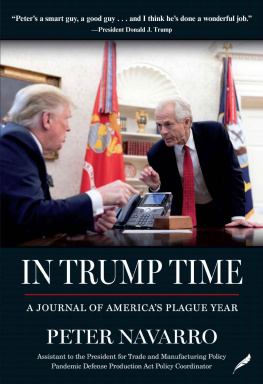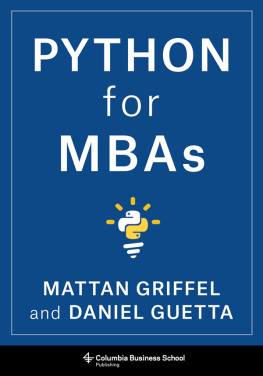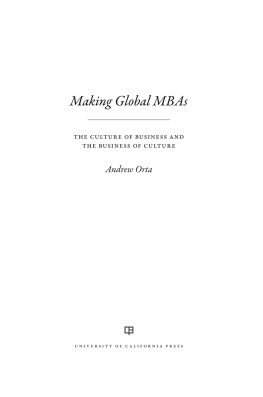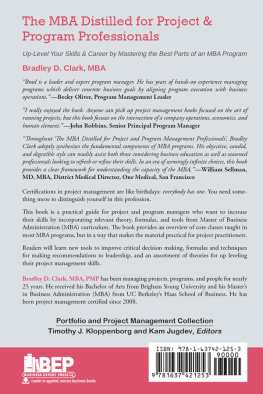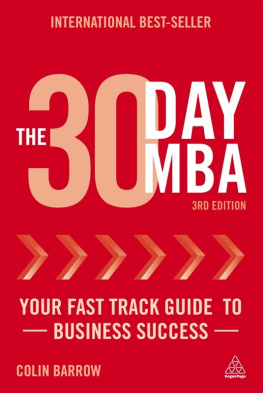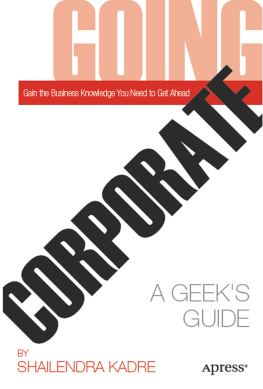
Copyright 2005 by The McGraw-Hill Companies, Inc. All rights reserved. Printed in China. Except as permitted under the United States Copyright Act of 1976, no part of this publication may be reproduced or distributed in any form or by any means, or stored in a database or retrieval system, without the prior written permission of the publisher.
ISBN: 978-0-07-176272-4
MHID: 0-07-176272-8
The material in this eBook also appears in the print version of this title: ISBN: 978-0-07-142275-8, MHID: 0-07-142275-7.
All trademarks are trademarks of their respective owners. Rather than put a trademark symbol after every occurrence of a trademarked name, we use names in an editorial fashion only, and to the benefit of the trademark owner, with no intention of infringement of the trademark. Where such designations appear in this book, they have been printed with initial caps.
McGraw-Hill eBooks are available at special quantity discounts to use as premiums and sales promotions, or for use in corporate training programs. To contact a representative please e-mail us at bulksales@mcgraw-hill.com.
TERMS OF USE
This is a copyrighted work and The McGraw-Hill Companies, Inc. (McGraw-Hill) and its licensors reserve all rights in and to the work. Use of this work is subject to these terms. Except as permitted under the Copyright Act of 1976 and the right to store and retrieve one copy of the work, you may not decompile, disassemble, reverse engineer, reproduce, modify, create derivative works based upon, transmit, distribute, disseminate, sell, publish or sublicense the work or any part of it without McGraw-Hills prior consent. You may use the work for your own noncommercial and personal use; any other use of the work is strictly prohibited. Your right to use the work may be terminated if you fail to comply with these terms.
THE WORK IS PROVIDED AS IS. McGRAW-HILL AND ITS LICENSORS MAKE NO GUARANTEES OR WARRANTIES AS TO THE ACCURACY, ADEQUACY OR COMPLETENESS OF OR RESULTS TO BE OBTAINED FROM USING THE WORK, INCLUDING ANY INFORMATION THAT CAN BE ACCESSED THROUGH THE WORK VIA HYPERLINK OR OTHERWISE, AND EXPRESSLY DISCLAIM ANY WARRANTY, EXPRESS OR IMPLIED, INCLUDING BUT NOT LIMITED TO IMPLIED WARRANTIES OF MERCHANTABILITY OR FITNESS FOR A PARTICULAR PURPOSE. McGraw-Hill and its licensors do not warrant or guarantee that the functions contained in the work will meet your requirements or that its operation will be uninterrupted or error free. Neither McGraw-Hill nor its licensors shall be liable to you or anyone else for any inaccuracy, error or omission, regardless of cause, in the work or for any damages resulting there from. McGraw-Hill has no responsibility for the content of any information accessed through the work. Under no circumstances shall McGraw-Hill and/or its licensors be liable for any indirect, incidental, special, punitive, consequential or similar damages that result from the use of or inability to use the work, even if any of them has been advised of the possibility of such damages. This limitation of liability shall apply to any claim or cause whatsoever whether such claim or cause arises in contract, tort or otherwise.
CONTENTS
Chapter 1
Who Should Read This Book?
Chapter 2
The Big PictureAn Overview of the MBA Curriculum
Chapter 3
Management StrategyFive Steps to Successful Strategic Analysis
Chapter 4
Macroeconomics and the Well-Timed Business Strategy
Chapter 5
Strategic MarketingDelivering Customer Value
Chapter 6
Operations and Supply Chain ManagementGetting the Stuff Out the Door
Chapter 7
Financial AccountingDoing the Numbers for Investors, Regulators and Other External Users
Chapter 8
Managerial AccountingDoing the Numbers for Internal Decision Making and Control
Chapter 9
Corporate FinanceThe Big Questions and Key Concepts
Chapter 10
Organizational BehaviorThe Power of People and Leadership
Chapter 12
Managerial EconomicsMicroeconomics for Managers
Chapter 13
Concluding Thoughts
DEDICATION
A s editor, I would like to dedicate this book to the wonderful mentors in my life: At Tufts University, during the turbulent 1960s, Professor Alan Lebowitz gave me focus as he eloquently introduced me to the writers craft. At Harvard University, during the energy crisis and stagflationary times of the 1970s, Thomas R. Stauffer taught me much of what I know today about the myriad intersections between business, economics, and politics. Finally, also at Harvard, as I pursued my doctorate in economics in the 1980s, I was exceedingly fortunate to develop under the watchful eye of Professor Richard E. Caves. No student ever had a more dedicated teacher and advisor.
Peter Navarro
Laguna Beach, California
www.peternavarro.com
CONTRIBUTORS
Charles P. BoniniGraduate School of Business, Stanford University.
Leslie K. BreitnerDaniel J. Evans School of Public Affairs, University of Washington.
Jeffrey F. JaffeThe Wharton School of Business, University of Pennsylvania.
Richard J. LutzWarrington College of Business Adminstration, University of Florida.
Steven L. McShaneGraduate School of Management, University of Western Australia.
Steven NahmaisLeavey School of Business, Santa Clara University.
Peter NavarroGraduate School of Business, University of California, Irvine.
Steven A. RossSloan School of Management, Massachusetts Institute of Technology.
Daniel F. SpulberKellog School of Management, Northwestern University.
Mary Ann Von GlinowFlorida International University.
Barton WeitzWarrington College of Business Adminstration, University of Florida.
Randolph W. WesterfieldMarshall School of Business, University of Southern California.
PART ONE
The Big MBA Picture
CHAPTER 1
Who Should Read This Book?
E ach year, from the ivy-covered halls of Harvard and Wharton and the sun-drenched campuses of Stanford and USC to the intellectual vineyards of Frances INSEAD, the fabled London School of Business, and the teeming campus of Hong Kong University of Science and Technology, more than 100,000 students graduate from full or part-time regular and executive MBA programs. As indicates for a typical year, this is more than three times the number of law degrees, more than four times the number of engineering degrees, and more than seven times the number of medical degrees.
TABLE 11 Professional Degrees Conferred Annually

There is a very good reason why the Masters of Business Administration (MBA) degree is so popular. The big questions that are addressed, the key concepts that are taught, the skills that are honed, the tools that are developed, and indeed the wisdom that is conveyed in the core MBA curriculum provide business executives from all walks of life and in every layer of management with the most powerful arsenal of analytical weapons ever assembled to fight the corporate wars.



